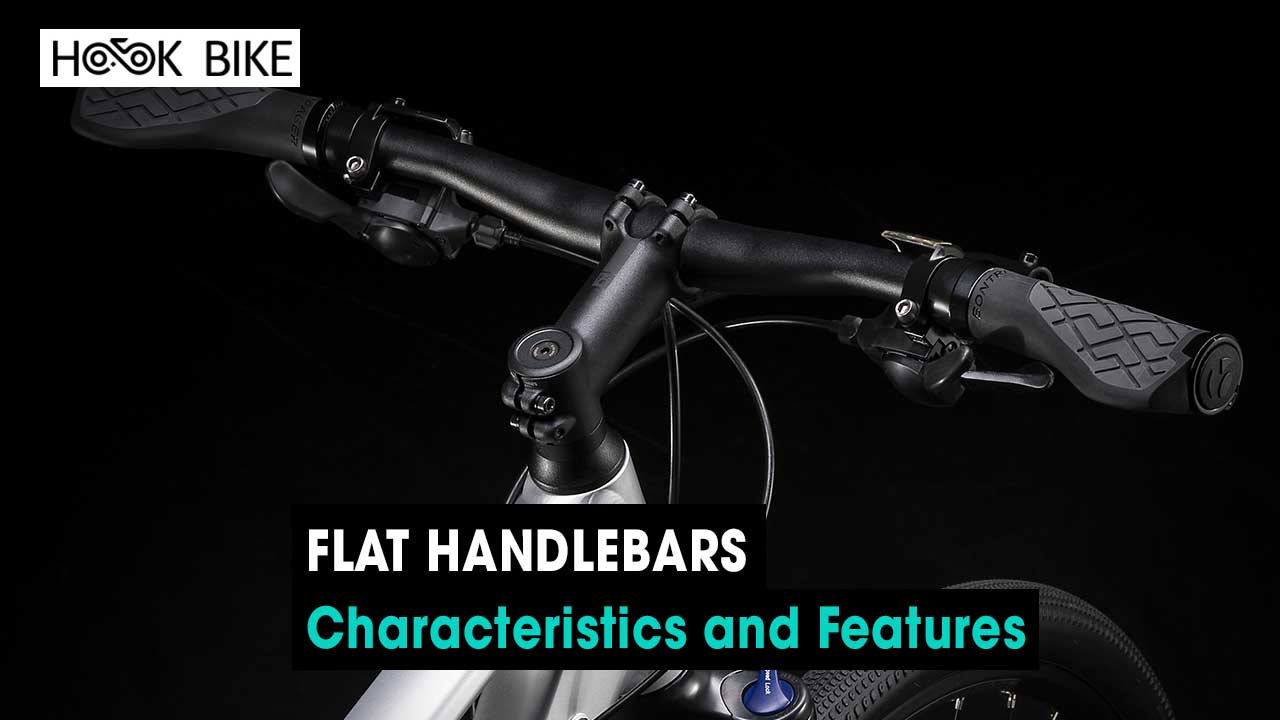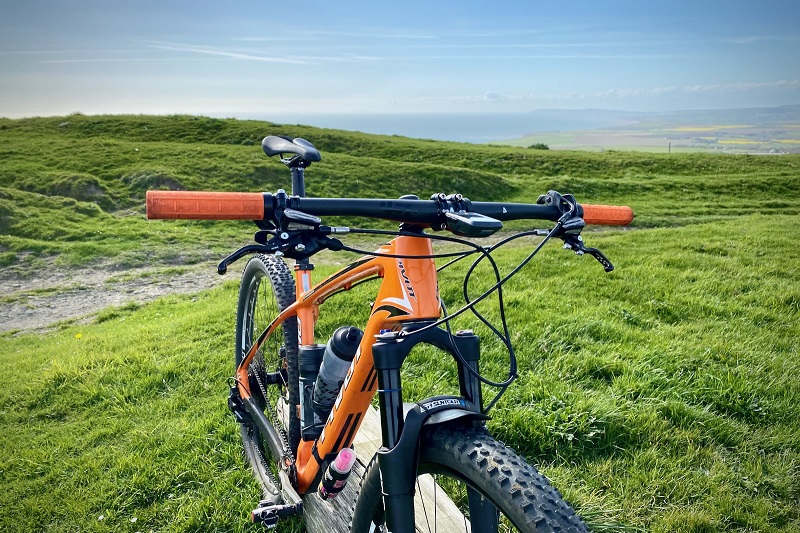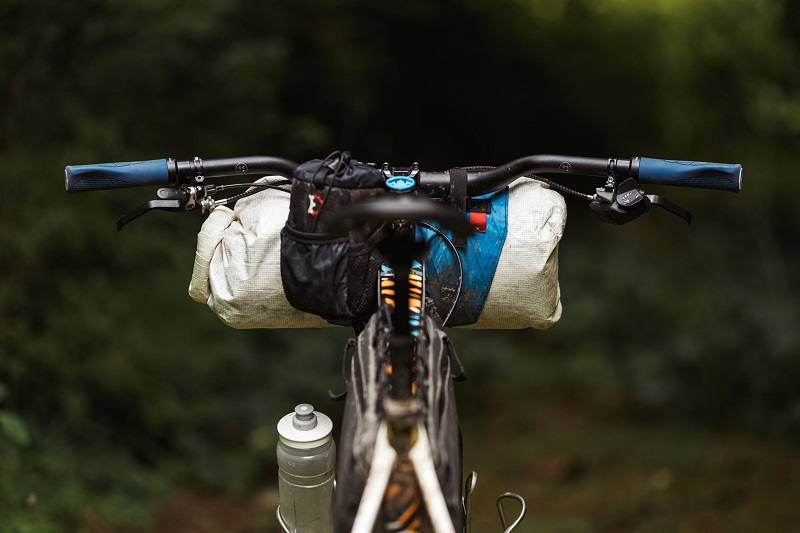Parts
Flat Handlebars: Characteristics and Features
Flat handlebars have risen in popularity among cycling enthusiasts and casual riders alike. Their simplicity, streamlined design, and ease of use have made them a favorite among many. In this comprehensive guide, HookBike delve deep into the characteristics and features of Flat handlebars to help you understand why they might be the perfect fit for your cycling needs.
History of Flat Handlebars
Flat handlebars, commonly found on mountain bikes, urban bikes, and some hybrid bicycles, have a unique history that’s intertwined with the development of various types of cycling. Here’s a brief overview of their history:
Early Bicycles: The first bicycles in the 19th century had a variety of handlebar shapes, but most of them were more upright and curved, resembling what we know today as “cruiser” handlebars or “North Road” bars.

Mountain Biking’s Birth: The origins of flat handlebars can be traced back to the birth of mountain biking in the 1970s in Marin County, California. Early pioneers of the sport, like Gary Fisher and Tom Ritchey, retrofitted older cruiser-style bicycles to handle the rough trails. These older bikes originally came with the more upright curved bars, but flat or slightly curved bars started to become popular as they provided better control, leverage, and stability over rough terrains.
BMX Influence: Around the same time, BMX (Bicycle Motocross) was gaining popularity. BMX bikes, designed for dirt tracks and stunts, often had straight or slightly bent bars. The cross-pollination of ideas between BMX and early mountain biking further entrenched the flat handlebar’s position in the off-road community.
Evolution for Performance: As mountain biking grew in popularity and the technology advanced, the design of the handlebars evolved too. Flat bars provided a more aggressive and forward-leaning posture ideal for climbing and speed. The wider grip offered better control, especially on technical descents.
Urban and Commuter Use: With the surge in urban cycling and commuting by the late 20th and early 21st centuries, the flat handlebar started appearing on urban and hybrid bikes. They offer a good compromise between control and an upright, comfortable riding position. They also provide a clean and minimalist look, which appeals to many urban riders.
Variations: Over the years, variations of the flat bar have appeared. “Riser bars” are like flat bars but rise slightly from the center, offering a more upright position. There are also “bullhorns” and “butterfly” bars, which provide multiple hand positions, but these are deviations from the traditional flat bar.
Ergonomics and Add-Ons: With more understanding of ergonomics, modern flat handlebars might come with a slight back sweep to better align with the natural position of a rider’s hands and wrists. Additionally, bar ends became a popular add-on in the 90s, providing an additional hand position and more leverage for climbing.
See more: types of handlebars for bicycles

In conclusion, the history of flat handlebars is deeply rooted in the evolution of mountain biking and the cross-influence of other cycling disciplines. Their design caters to both performance and comfort, making them a versatile choice across various bike types.
Characteristics of Flat Handlebars
Flat handlebars have several distinctive characteristics that set them apart from other types of handlebars and make them suitable for specific types of riding. Here are the main characteristics:
Shape
As the name suggests, flat handlebars are generally straight, resembling a simple elongated bar. However, some may have a slight rise or back sweep to align better with a rider’s natural wrist position.
Width
Flat handlebars are usually wider than road or racing handlebars. This width can range from 580mm to 800mm or more, especially on modern mountain bikes. The wide grip offers better control, stability, and leverage, especially on rough terrains.
Material
Flat handlebars are typically made from aluminum, carbon fiber, or steel. Aluminum offers a good balance between weight, strength, and cost. Carbon fiber is lighter and can provide better vibration damping but is also more expensive. Steel is durable and has a natural flex, but it’s heavier than the other two materials.
Clamp Diameter
The center of the handlebar, where it attaches to the stem, often has a larger diameter to ensure strength and rigidity. Common clamp diameters include 25.4mm, 31.8mm (often referred to as “oversized”), and 35mm.
Attachment Points
Many flat handlebars come with pre-drilled holes or markings for brake levers, shifters, and other accessories. This ensures a cleaner setup and can prevent potential damage from drilling after the fact.
Ergonomics
Some flat handlebars have a slight back sweep (angled towards the rider) to provide a more ergonomic hand position. This can reduce wrist and hand strain over long rides.
Versatility
Flat handlebars can often be cut down to a desired width, allowing riders to customize them based on their preferences or the type of riding they do. For example, a trail mountain biker might prefer wider bars for stability, while an urban commuter might want narrower bars to navigate tight spaces.
See more: Bullhorn Handlebars
Accessories
Flat bars provide ample space for various accessories like lights, bells, GPS devices, phone mounts, and more.
Position
They typically position the rider in a more upright posture compared to drop bars found on road bikes. This position can be more comfortable for many and offers better visibility in traffic.
Simplicity
One of the reasons they’re popular, especially among urban riders and commuters, is their simplicity and clean look. Without the curves and drops of other handlebar types, they present a straightforward and minimalist aesthetic.

Flat handlebars are versatile, ergonomic, and functional, making them a popular choice for various types of cycling, especially mountain biking and urban commuting. Their characteristics make them suitable for riders seeking control, an upright position, and a straightforward design.
Key Features of Flat Handlebars
Flat handlebars, while seemingly simple in design, have specific key features that distinguish them and enhance their functionality:
Shape and Profile
Predominantly straight and horizontal, the main defining feature of a flat handlebar is its flat profile, though some can have a slight upward rise or a back sweep.
Clamp Area
This is the section in the middle of the handlebar that clamps to the bike’s stem. It’s thicker to ensure strength and rigidity. Common diameters include 25.4mm, 31.8mm, and 35mm.
Material
Often made from aluminum for its balance of strength, weight, and cost. However, they can also be made from steel, carbon fiber, and titanium. The choice of material can influence the handlebar’s weight, strength, vibration dampening properties, and cost.
Ergonomic Design
Some flat handlebars incorporate ergonomic features like a slight back sweep to provide a more natural wrist position, reducing potential strain and discomfort during rides.
Accessory Compatibility
Designed to accommodate a range of accessories. There’s usually ample space to mount gear shifters, brake levers, lights, bells, and more.
End Caps
The ends of flat handlebars are often capped to prevent injury and protect the bars from damage. These caps can be simple plugs, or riders might use bar ends for an additional hand position.
Finish and Texture
The area where grips, brakes, and shifters are mounted often has a textured surface to prevent slippage. Additionally, the aesthetic finish, whether painted, anodized, or raw, can add to the bike’s overall look.
Flex and Vibration Dampening
While rigidity is essential for control, a good flat handlebar also offers some degree of flex or vibration dampening, especially important for mountain bikers. This characteristic largely depends on the material used and the construction method.
See more: Moustache Handlebars
Cutting Marks
Many flat handlebars come with marks that guide users if they decide to trim or cut down the bar to a preferred width.
While flat handlebars might seem basic, these key features make them adaptable and functional across various cycling disciplines, particularly in mountain biking and urban commuting scenarios. They offer a blend of control, comfort, and customization that many riders appreciate.

Choosing the Right Flat Handlebar for Your Needs
Choosing the right flat handlebar is essential for comfort, control, and overall cycling performance. Here’s a guide to help you make an informed decision:
Intended Use
- Mountain Biking: For aggressive trail riding, wider bars (700mm-800mm or even wider) can provide better leverage and control. But for tight trails with lots of obstacles, a slightly narrower bar might be more practical.
- Urban/Commuting: For city riding where you may need to weave through traffic or tight spaces, consider a moderate width, around 580mm to 680mm.
- Touring: For long-distance rides, you might want a handlebar with a slight rise or back sweep for comfort. The width is a personal preference but lean towards a size that offers stability and control.
Material
- Aluminum: A good all-rounder – strong, lightweight, and affordable.
- Carbon Fiber: Lighter and can dampen vibrations better than aluminum, but it’s more expensive.
- Steel: Durable and has a natural flex which can absorb shocks, but it’s heavier.
- Titanium: Combines the best of steel and aluminum in terms of flex and weight, but is the most expensive.
Width
Wider bars provide more control and stability, especially at high speeds or on rough terrains. However, too wide can be uncomfortable and lead to oversteering. You can always buy a wider handlebar and trim it down later.
Rise & Sweep
- Rise: Refers to how much the handlebar rises from the center clamp area. Some riders prefer a bit of rise for a more upright riding position.
- Sweep: Refers to the angle at which the bars bend backward towards the rider. A back sweep can provide a more ergonomic hand position.
Clamp Diameter
Make sure the clamp diameter of the handlebar matches your stem. The most common sizes are 25.4mm and 31.8mm, but there are also 35mm clamps in some modern designs.
Ergonomics
Consider any existing wrist or hand discomfort. Handlebars with a slight back sweep can alleviate pressure on the wrists.
Weight
If you’re aiming to keep your bike lightweight, especially for competitive scenarios, consider the weight of the handlebar, with carbon fiber being the lightest option typically.
Aesthetics
The color, finish, and branding might matter to some riders in terms of how it matches the overall look of the bike.
Budget
Set a budget and try to get the best handlebar within that range. Remember, while premium bars offer advantages in terms of weight and vibration dampening, a well-chosen aluminum bar can also serve most riders excellently.
Feedback & Reviews
Look for reviews online or ask fellow riders for feedback on specific handlebars or brands.
After choosing and installing your new handlebar, make sure to test it in a safe environment. It might take a bit of adjustment to get used to the new width, rise, or sweep. Always ensure all components are correctly tightened and regularly inspect your handlebar for any signs of damage or wear.

Benefits of Using Flat Handlebars
Flat handlebars, often associated with mountain bikes, urban bikes, and hybrids, come with a variety of benefits that can enhance the cycling experience for many riders:
- Enhanced Control: Their wide grip gives riders better control over their bike, especially when navigating tight corners or rough terrains.
- Comfort: The upright position reduces strain on the back and shoulders, making it suitable for long rides.
- Affordability: Generally, flat handlebars are more affordable than their counterparts, making them a great choice for those on a budget.
- Easy Maintenance: With fewer components and a straightforward design, maintaining and replacing flat handlebars is relatively easier.

Conclusion
Flat handlebars offer a blend of simplicity, comfort, and versatility. Whether you’re an avid cyclist or someone who enjoys leisurely rides, understanding the characteristics and features of flat handlebars can aid in making an informed decision for your cycling needs. Embracing their history, appreciating their design, and capitalizing on their features can elevate your riding experience to new heights.

